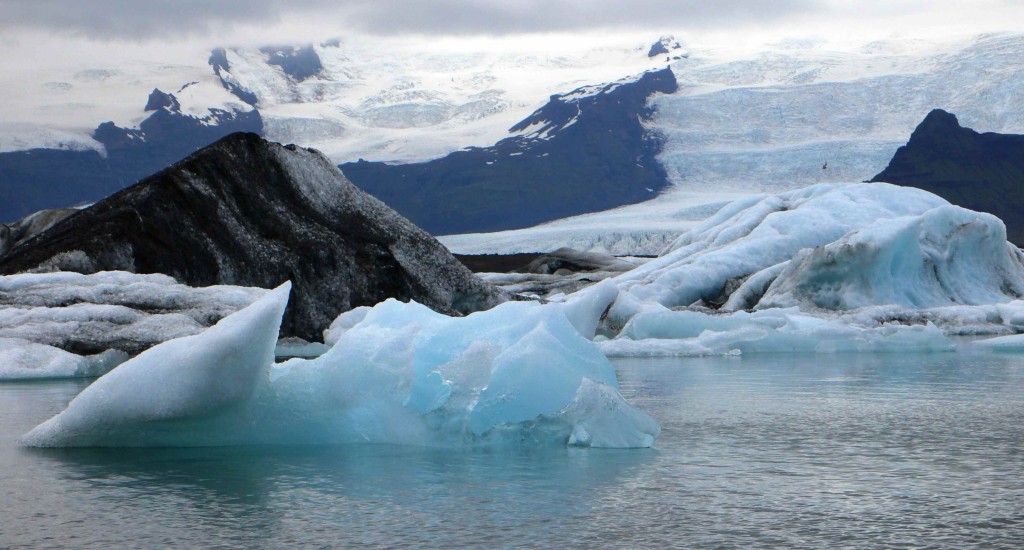OK, the TLDR summary is – Yes, the ice really is vanishing and we are already starting to experience the consequences.
So there you go then, you can skip reading and watching the clips below. Ah but if you just happen to be curious to know how we know this to be factual, then it might be worth reading a bit more.

What is 100% transparently clear is that the Arctic is not just having a couple of unusually warm winters, but rather is going through a very rapid and transformation.
Here is a video that illustrates this is a very dramatic fashion. The winter ice pack in the Arctic was once dominated by multi-year, thick ice. Today, very little old ice remains. What this animation shows are maps of sea ice age from 1987 through the end of October 2013. Age class 1 (the dark blue) means “first-year ice,” which is ice that formed in the most recent winter. The oldest ice (9+) (in white) is ice that is more than 9 years old.
Now watch and see how the old ice that ice that once prevailed has vanished.
In contrast to multi-year ice, first-year ice—ice that formed only since the last melt season—is thinner, saltier, and much more prone to melt. Since the late 1980s, this young, melt-prone ice has come to dominate the Arctic sea ice pack. Ice that is more than nine years old now persists only as a sliver snaking its way along the Canadian Arctic islands and northern Greenland, and virtually no ice that old remains in the central Arctic.
Salt content and hardness play a part in multi-year ice’s resistance to melt, but the main characteristic that allows the ice to survive the melt season is thickness. Ice that survives multiple melt seasons in the Arctic can thicken up 4 meters (13 feet). So the loss of multi-year ice translates into an overall loss of Arctic sea ice volume.
Ah … so what this is telling us is that potentially the volume of sea ice is shrinking. OK, so is it?
Yes, it really is … here is another NOAA clip that illustrates that.
What you can see below from side to side is a curve showing the full yearly cycle of sea ice volume, and so obviously illustrates the normal summer/winter distribution. Then, as it progresses, you see lines being drawn for successive years. What leaps out is that regardless of the normal summer/winter variations, the overall trend for sea ice volume is draining away … akin almost to somebody pulling the plug on a bath.
The loss of thick, melt-resistant, multi-year ice can easily become a self-reinforcing process. When multi-year ice melts away—or when young ice fails to survive any melt seasons—the ice that remains in the Arctic will be predisposed to melt quickly during the following summer.
Well OK, some might think, “Fine, so the sea ice is melting, so what, we can now open up new trade routes”.
Well think of it this way – ice is white and very reflective like a mirror, so the heat from the sun simply gets reflected back out into space. A sea surface with no ice, is not so reflective, and so it will absorb the heat instead. This then leads to very dramatic changes for all of us down the road.
The arctic is not isolated from the rest of the planet, but is actually all part of what drives our normal weather patterns. The inevitable consequence is that changes in the Arctic will ripple out into dramatic changes within the atmospheric variability over the extratropical northern hemisphere.
If, for example, you read this paper, then the suggestion is that there will be a lot of snow and rain …(from page 14) … and yes, this was written before what has turned out to be the wettest winter on record ever in the UK …
Given the widespread terrestrial warming during the winter season, the increases in snow depth must be a result of enhanced precipitation. Indeed, precipitation increases in early winter (November-December) over Siberia, eastern Alaska and northern Canada, and through mid-winter (January-February) over Siberia (Fig. 5). Several factors may contribute to the precipitation increases, including enhanced water vapor content in the terrestrial boundary layer (due to increased moisture transport out of the Arctic by the sub-monthly transients; not shown), destabilization of the terrestrial boundary layer due to surface-intensified warming (recall Figs. 6-8), and enhanced low-level convergence associated with decreases in sea level pressure (discussed in Section 3f).
Bottom line: the climate is changing, there will be consequences for us all, and it is also perhaps too late to actually do anything to stop any of this. We will need to learn to adapt, and as we do so there will be a increasing degrees of disruption experienced as this continues to unfold in the decades to come.